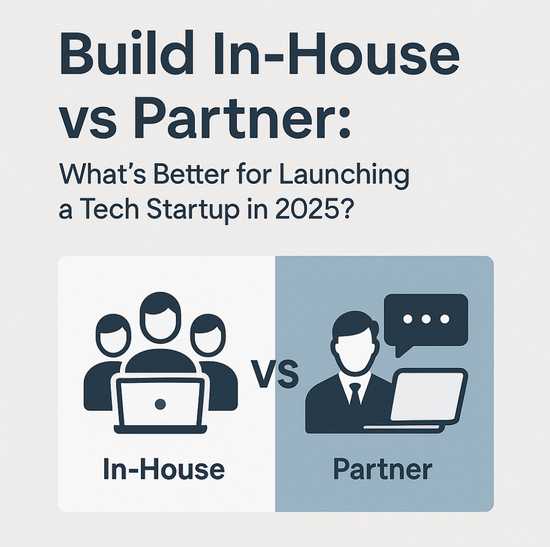How to Build a Niche E-Commerce Platform in the UAE: From Idea to Launch
Introduction
The United Arab Emirates has become one of the most dynamic digital commerce hubs in the Middle East. As the region embraces innovation, niche e-commerce startups have a unique opportunity to thrive - especially when built on strong product discovery, local insights, and scalable technology.
In this article, we explore how to build a niche e-commerce platform in the UAE, from idea validation and technical architecture to launch and growth - with insights drawn from Inventale’s custom software development expertise.
1. Why the UAE Is a Compelling Market for a Niche E-Commerce Platform
The UAE’s e-commerce landscape continues to accelerate:
- Market size: The UAE e-commerce market surpassed USD 125 billion in 2024 and continues to expand (IMARC Group).
- Digital adoption: The UAE has near - 100 % internet and smartphone penetration (Go-Globe).
- Category growth: Niche verticals - beauty, luxury, sustainable fashion - are outpacing broader retail (ADAT).
- Business-friendly environment: Favorable free-zone frameworks simplify digital business setup (MOET UAE).
The UAE is a ready market for specialized, high-value online platforms - if you can deliver localized experiences and high service quality.
2. Choosing and Validating Your Niche
Building a “general” online store is no longer a winning strategy. The future belongs to focused, high-intent verticals.
2.1 Define the niche
Start by asking:
- What market gaps exist? (For example: sustainable cosmetics, B2B logistics supplies, premium home decor.)
- Who is your target customer?
- What differentiates your product or service? (Faster delivery, customization, local payment options?)
2.2 Validate your idea
Before development, conduct product discovery - as described in our article on Effective Product Discovery Teams.
Key steps:
- Research market demand and competitors.
- Interview potential users.
- Test MVP hypotheses with low-fidelity prototypes.
- Define essential MVP features and KPIs.
2.3 Consider the UAE-specific context
- Payments: Cards, mobile wallets, and BNPL solutions dominate (Mordor Intelligence).
- Mobile usage: Over 80% of transactions occur via smartphones.
- Logistics: Optimize for Dubai first, then scale across emirates.
- Regulations: Ensure your entity complies with UAE e-commerce laws and free-zone licensing.
3. Defining the Tech Stack and Partner
Choosing the right technology and development partner will define your platform’s success.
3.1 Core technical requirements
A robust UAE-ready e-commerce platform should include:
- Scalable cloud-native architecture;
- Mobile-first UI/UX;
- Multi-language support (Arabic + English);
- Integration with local payment gateways;
- Automated shipping & fulfillment;
- Secure data handling (GDPR & UAE regulations);
- Analytics and conversion optimization tools.
Explore how Inventale approaches these challenges in Custom Software Development.
3.2 Choosing the right partner
When evaluating vendors, look for:
- Proven e-commerce and logistics experience in the GCC region.
- Transparent delivery model and milestone reporting.
- Strong UX/UI and mobile design expertise.
- Post-launch support and scalability planning.
At Inventale, we emphasize discovery, agile delivery, and cultural understanding - key for building digital products in the UAE.
4. Roadmap: From MVP to Full Launch
| Phase | Key Activities |
|---|---|
| Discovery & Planning | Market research, define personas, create user journeys, architecture design. |
| MVP Development | Core catalog, checkout, payments, logistics, admin dashboard, analytics. |
| Pilot Launch | Test in one emirate (e.g., Dubai), gather feedback, optimize UX. |
| Full Launch & Scale | Expand regionally, invest in marketing, optimize fulfillment and retention. |
Each step should be measurable - set KPIs such as conversion rate, average order value (AOV), repeat purchase rate, and cart abandonment rate.
5. Marketing and Growth in the UAE
5.1 Marketing to a UAE audience
- Focus on mobile and social commerce.
- Run bilingual campaigns (English + Arabic).
- Use holiday promotions.
- Collaborate with local influencers.
- Leverage SEO for “Dubai”, “Abu Dhabi”, and “UAE” search terms.
5.2 Retention strategies
- Build loyalty and referral programs.
- Offer personalized recommendations and email journeys.
- Ensure fast returns and top-tier customer service.
- Use data analytics to reduce churn.
6. Common Pitfalls and How to Avoid Them
| Risk | Mitigation |
|---|---|
| Overcrowded market | Focus on niche differentiation and premium experience. |
| Logistics challenges | Start with one emirate, partner with local couriers. |
| Payment friction | Offer UAE-trusted gateways and currencies. |
| Poor UX | Prioritize mobile testing and Arabic UX adjustments. |
| Scaling issues | Use modular, cloud-based architecture. |
7. Why a UAE-Experienced Partner Matters
Working with a partner who understands UAE digital ecosystems can drastically improve your success rate.
At Inventale, we combine product discovery, UX design, and regional expertise to help B2B clients turn ideas into profitable platforms.
Read more about our approach to E-commerce Software Development and explore our case studies.
Conclusion
Building a niche e-commerce platform in the UAE isn’t just about developing the digital storefront - it’s about understanding local users, adapting to the ecosystem, and choosing a capable tech partner.
If you’re planning to enter this market, start with a strong foundation: discovery, the right architecture, and a team that knows how to scale in the UAE.


